Blog

Empowering Radical Cross-Coupling Chemistry through AI-Driven Retrosynthesis and Real-World Validation.
This article explores how radical cross-coupling chemistry and AI-driven retrosynthesis are converging to reshape modern synthesis. By examining case studies from Baran-lab RCC methods and evaluating ChemAIRS® route-planning performance, we show how AI is increasingly capable of recognizing, ranking, and proposing radical disconnections with expert-level intuition. Combined with new hydrazide-based redox-free RCC protocols and commercially available sulfonyl hydrazides, this integration is transforming radical chemistry from a specialized technique into a practical, accessible tool for medicinal chemists.

Integrating Human Insight with AI: Retrosynthetic Exploration of Surzetoclax (ABBV-453)
Using ChemAIRS, we explored synthetic pathways to AbbVie’s Surzetoclax (ABBV-453), a highly complex, next-generation BCL-2 inhibitor weighing nearly 1000 Da with multiple fused tricyclic and macrocyclic rings. In High-Risk Retrosynthesis mode, ChemAIRS showcased its ability to navigate this molecular complexity. Guided by human insight, the AI-driven retrosynthesis platform delivered a streamlined, convergent, and experimentally executable synthesis, highlighting the power of human-AI collaboration in modern drug discovery.

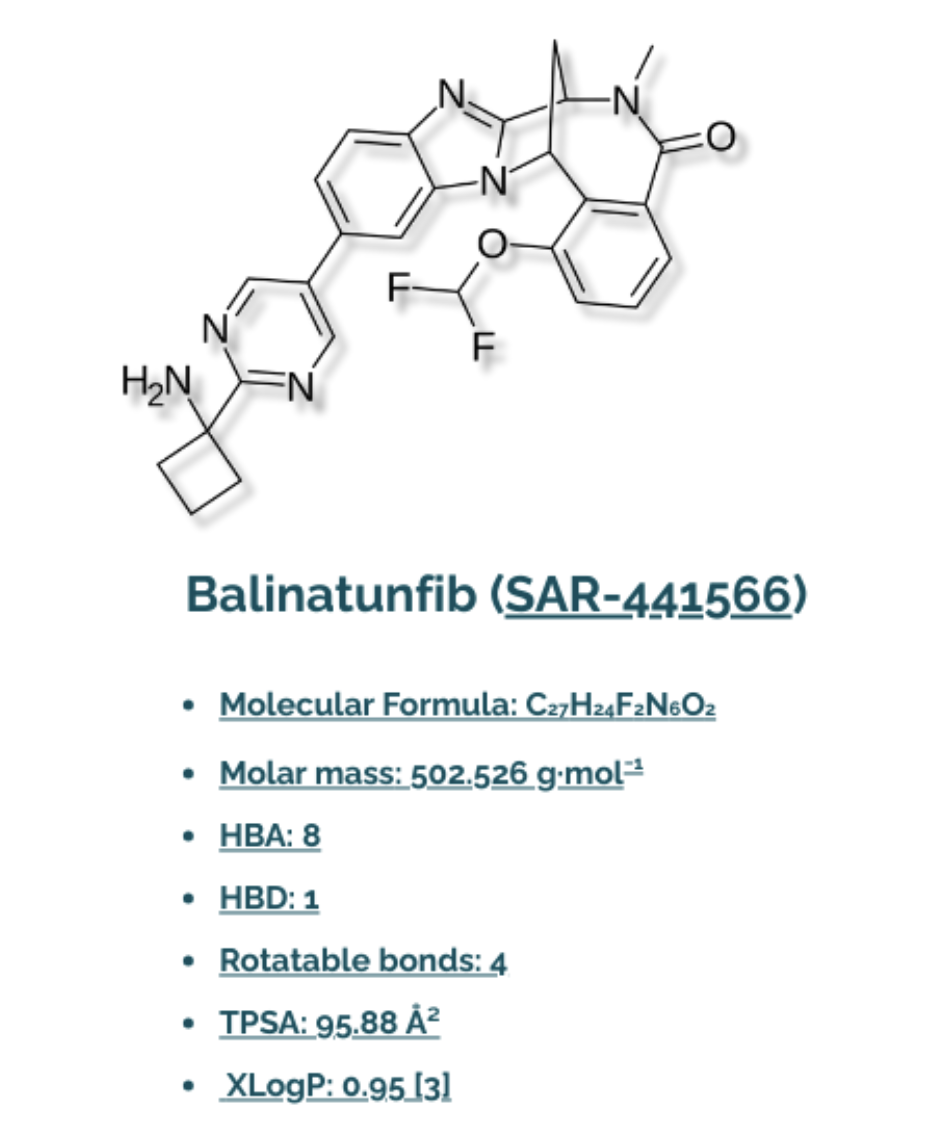
Human–AI Synergy in Retrosynthetic Analysis and Route Optimization of Balinatunfib
Discover how AI-driven retrosynthesis and human expertise converge in the development of Balinatunfib (SAR-441566), a first-in-class small-molecule TNF-α inhibitor. Learn about its unique allosteric mechanism, clinical progress, and how ChemAIRS revolutionizes route optimization, enabling cost-effective and scalable synthesis in modern drug discovery.
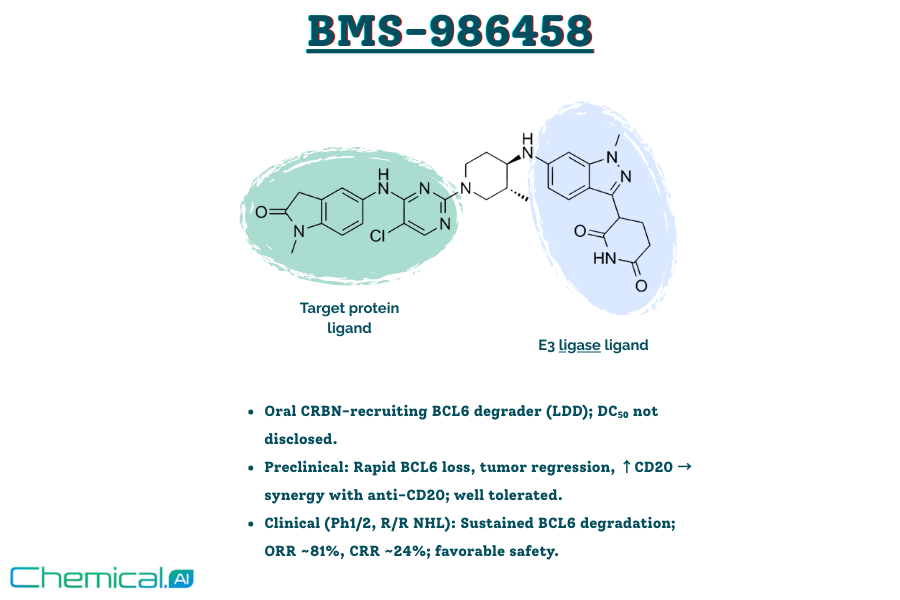
Bridging Biology and Chemistry: BCL6, BMS-986458, and AI-Predicted Routes to Scalable Degraders
This blog explores the role of BCL6 as a central lymphoma driver and the clinical progress of Bristol Myers Squibb’s oral degrader BMS-986458. It also discusses AI-driven retrosynthesis tools like ChemAIRS, which propose palladium-free, scalable synthetic routes to overcome key challenges in PROTAC development.

Expanding the Therapeutic Toolbox: New Modalities for Modern Drug Hunters
This article reframes drug discovery around a central strategic question: not simply ‘Can we inhibit this target?’ but ‘What’s the optimal way to modulate this biology for the right patient?’ Through a case study on dabrafenib’s paradoxical MAPK activation, it shows why conventional inhibition can fail and how next-generation BRAF inhibitors and targeted protein degraders avoid those pitfalls.
It then zooms out to map the full range of modern modalities, from antibodies and RNA therapeutics to ADCs, PROTACs, molecular glues, and tri-complex inhibitors, and the frameworks that guide their selection based on biology, mechanism, and practical constraints. With examples like Revolution Medicines’ macrocyclic molecular-glue approach to RAS, the piece positions modality choice as a competitive advantage in creating the next generation of precision medicines.

Enabling Retrosynthetic Planning for Radiotheranostics: ChemAIRS-Driven Synthesis of PSMA and NTSR1 Ligands
ChemAIRS is revolutionizing radiotheranostic drug discovery by providing AI-powered retrosynthetic planning for complex radioligands. As PSMA-targeted therapies like Pluvicto™ prove transformative in prostate cancer, overcoming resistance and heterogeneity requires next-generation targets like NTSR1—and scalable synthesis to match.
By combining domain expertise with advanced retrosynthetic algorithms, ChemAIRS accelerates the design of efficient, cost-effective routes for critical precursors. This empowers researchers to rapidly innovate against PSMA-refractory disease and beyond, shortening the path to life-saving radiopharmaceuticals for advanced cancers

ChemAIRS-Driven Route Design for Macrocyclic 3CLpro Inhibitors: Streamlining Access to Promising Anti-Coronavirus Therapeutics_EP22
Macrocyclic inhibitors targeting the 3C-like protease hold immense promise in combating coronaviruses like SARS-CoV-2—yet their intricate synthesis poses a major hurdle. In this case study, we explore how ChemAIRS, an AI-driven retrosynthesis platform, revolutionizes the process by identifying scalable synthetic routes. Demonstrating its capabilities, ChemAIRS successfully mapped efficient pathways for two macrocyclic compounds from Vir Biotechnology’s patent. By integrating domain expertise with advanced cheminformatics, ChemAIRS accelerates route scouting, overcomes synthetic barriers, and drives innovation in drug discovery—proving itself as an indispensable tool for modern medicinal chemistry

ChemAIRS in Action: Accelerating the Discovery and Optimization of Synthetic Routes for ALKS 2680, a Selective Orexin-2 Receptor Agonist developed by Alkermes_EP21
Utilizing the AI-powered retrosynthetic platform ChemAIRS, multiple synthetic routes to the selective OX2R agonist ALKS 2680 were computationally generated and evaluated. The following sections summarize three distinct synthetic strategies:
The published route disclosed by Alkermes
A de novo discovery route enabled by ChemAIRS
A scalable synthetic sequence also proposed by ChemAIRS with an emphasis on practicality and supply chain readiness

ChemAIRS-Driven Retrosynthesis of Elironrasib (RMC-6291): A Next-Gen KRAS-G12C(ON) Inhibitor_EP20
The ChemAIRS platform successfully reconstructed a 25-step synthetic route to Revolution Medicines' groundbreaking KRAS inhibitor, elironrasib (RMC-6291). This next-generation therapeutic leverages a sanglifehrin-inspired macrocycle to form a stable tri-complex with KRAS-G12C(ON) and cyclophilin A (CypA), achieving exceptional selectivity through conformational rigidity.
Key ChemAIRS contributions:
Modular retrosynthesis: Deconstructed the macrocycle into two manageable fragments
Supply chain optimization: Identified commercially available starting materials
Risk mitigation: Flagged potential side reactions for synthetic planning
Route validation: Closely mirrored Revolution Medicines' published strategy
By combining macrocyclic drug design with AI-driven synthesis planning, ChemAIRS demonstrates how computational tools can accelerate the development of complex targeted therapies.

ChemAIRS Optimizes the Synthesis of Novo Nordisk’s Glucose-Sensitive Derivatives_EP19
ChemAIRS transformed retrosynthesis planning for Novo Nordisk’s diboron-based glucose-sensitive derivatives—delivering unprecedented efficiency gains and scalable routes. By integrating microwave-assisted Ir-catalyzed C–H borylation and ultra-low Pd Miyaura couplings (B₂(neop)₂/B₂Pin₂ optimization), ChemAIRS achieved what traditional methods couldn’t: compressing a 12-day synthesis into 1 hour while reducing Pd loading 100-fold. Our retrosynthetic strategy identified optimal disconnections, minimized competing pathways, and enabled cost-effective scale-up of these critical glucose-responsive therapeutics. See how intelligent route design and catalytic innovation are redefining medicinal chemistry timelines.

Leveraging ChemAIRS to Investigate Synthetic Strategies for SGR-1505, a MALT1 inhibitor from Schrodinger_EP09
ChemAIRS optimized synthesis of Schrödinger’s Phase 1 MALT1 inhibitor SGR-1505—proposing a novel Curtius rearrangement route and an early asymmetric methylation strategy to bypass expensive chiral purification. Revolutionize your complex molecule synthesis with AI-driven retrosynthesis.

Utilizing ChemAIRS to Explore Synthetic Strategies of AB521, an HIF-2⍺ inhibitor from Arcus Bioscience_EP10
ChemAIRS overcame the synthetic challenges of Arcus Biosciences’ HIF-2⍺ inhibitor AB521 (casdatifan)—a complex molecule with four rings and five stereocenters—by designing convergent routes and enabling parallel intermediate synthesis. Accelerate your anticancer drug development with AI-driven retrosynthesis
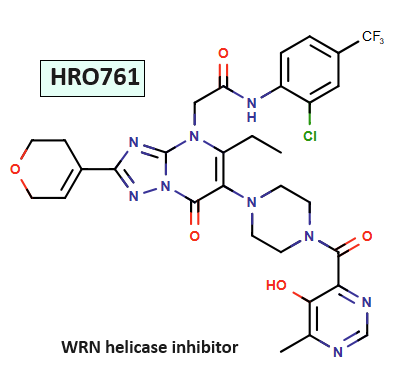
Streamlining the Synthesis of Novartis’ WRN Inhibitor HRO761 with ChemAIRS: A Promising Therapeutic for MSI Cancers_EP05
ChemAIRS accelerated Novartis’ WRN inhibitor (HRO761) development by designing a robust 13-step synthesis and patent-diverting alternatives that optimize intermediates and reduce side-reaction risks—empowering this first-in-class MSI-solid tumor therapy. Transform your oncology pipeline with AI-driven retrosynthesis

Leveraging ChemAIRS to Unveil Synthetic Strategies for Selective Cannabinoid Receptor 2 Inverse Agonists_EP11
ChemAIRS accelerates development of groundbreaking CB2R inverse agonists (ETH/OHSU/Roche) by optimizing HU-308-derived syntheses—delivering high-affinity, CB1R-selective compounds with minimized CNS side effects. Discover how AI-driven retrosynthesis overcomes pitfalls in cannabinoid drug discovery.

Leveraging ChemAIRS to Investigate Synthetic Strategies for Chiral Spirocyclic Isoxazolone, a Vital Building Block in a Boehringer Ingelheim Drug Development Program_EP08
ChemAIRS enabled efficient synthesis of Boehringer Ingelheim’s chiral spirocyclic isoxazolone—a versatile scaffold with anti-inflammatory to anticancer potential—by proposing multiple pathways, flexible starting materials, and scalable conditions while mitigating side reactions. Discover how AI-driven retrosynthesis accelerates heterocyclic drug development.

Utilizing ChemAIRS to Explore Synthetic Strategies of Azabenzimidazolone: A Potent αvβ1 Integrin Antifibrotic by Takeda_07
ChemAIRS redefined synthetic strategy for Takeda's αvβ1-targeting azabenzimidazolone antifibrotic, proposing novel routes that bypass traditional limitations. By anticipating side reactions and optimizing pathways, our AI-driven platform delivers reliable, innovative solutions for complex drug discovery challenges.
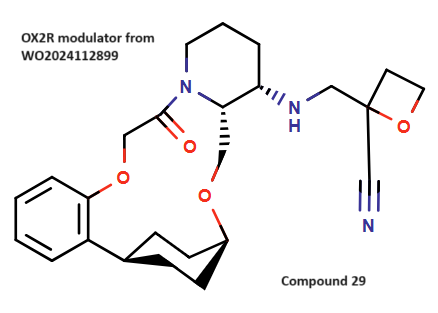
Use ChemAIRS to Investigate Synthesis Strategies of OX2R Modulator, a Vertex Pharmaceuticals' Approach to Narcolepsy Treatment_EP06
ChemAIRS analyzed Vertex's OX2R-targeting macrocyclic amines (like compound 29), proposing API synthesis routes that match published methods while suggesting novel alternatives. This AI-driven flexibility accelerates CNS drug discovery by empowering chemists to explore optimized pathways for high-affinity, brain-penetrant therapeutics.
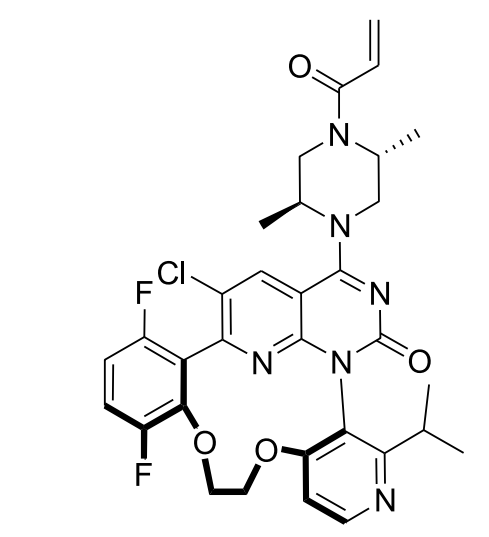
Rapidly Identifying Alternative Synthetic Routes for Merck's KRAS G12C Inhibitor_EP04
ChemAIRS, our AI-driven retrosynthesis platform, accelerated Merck's breakthrough KRAS G12C inhibitor discovery by proposing efficient synthetic routes and mitigating risks. By aligning with proven methods while offering optimized pathways, ChemAIRS empowers safer, faster drug development for innovative cancer therapies.

Exploring the Synthesis of Janssen's RSV-F Inhibitor Using ChemAIRS_EP03
ChemAIRS, our AI-driven retrosynthesis platform, predicted Janssen’s synthetic route for a potent RSV fusion inhibitor—targeting a virus that hospitalizes vulnerable populations—and proposed a cost-effective alternative. This demonstrates ChemAIRS’ ability to generate optimized, customizable pathways for efficient drug synthesis.
